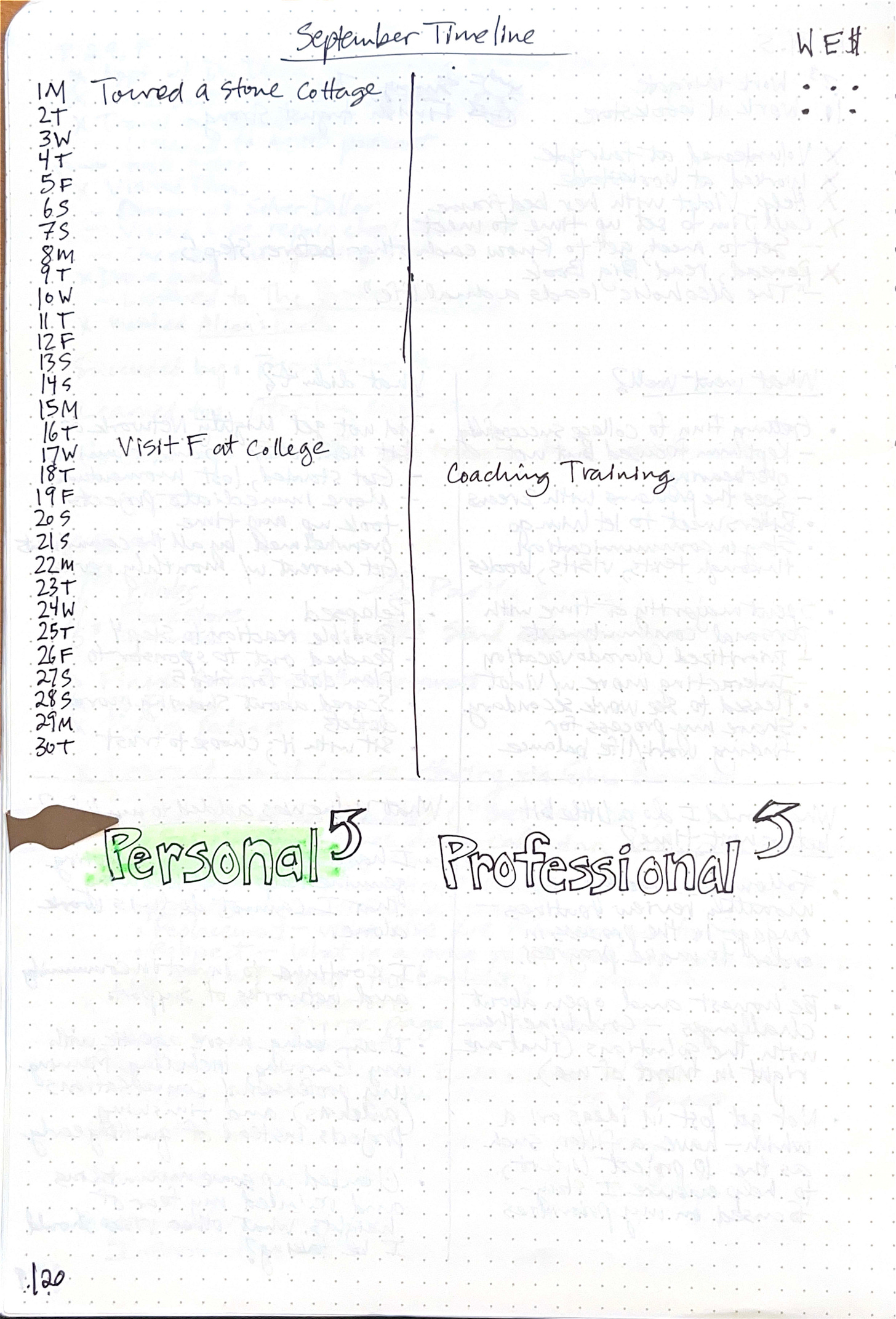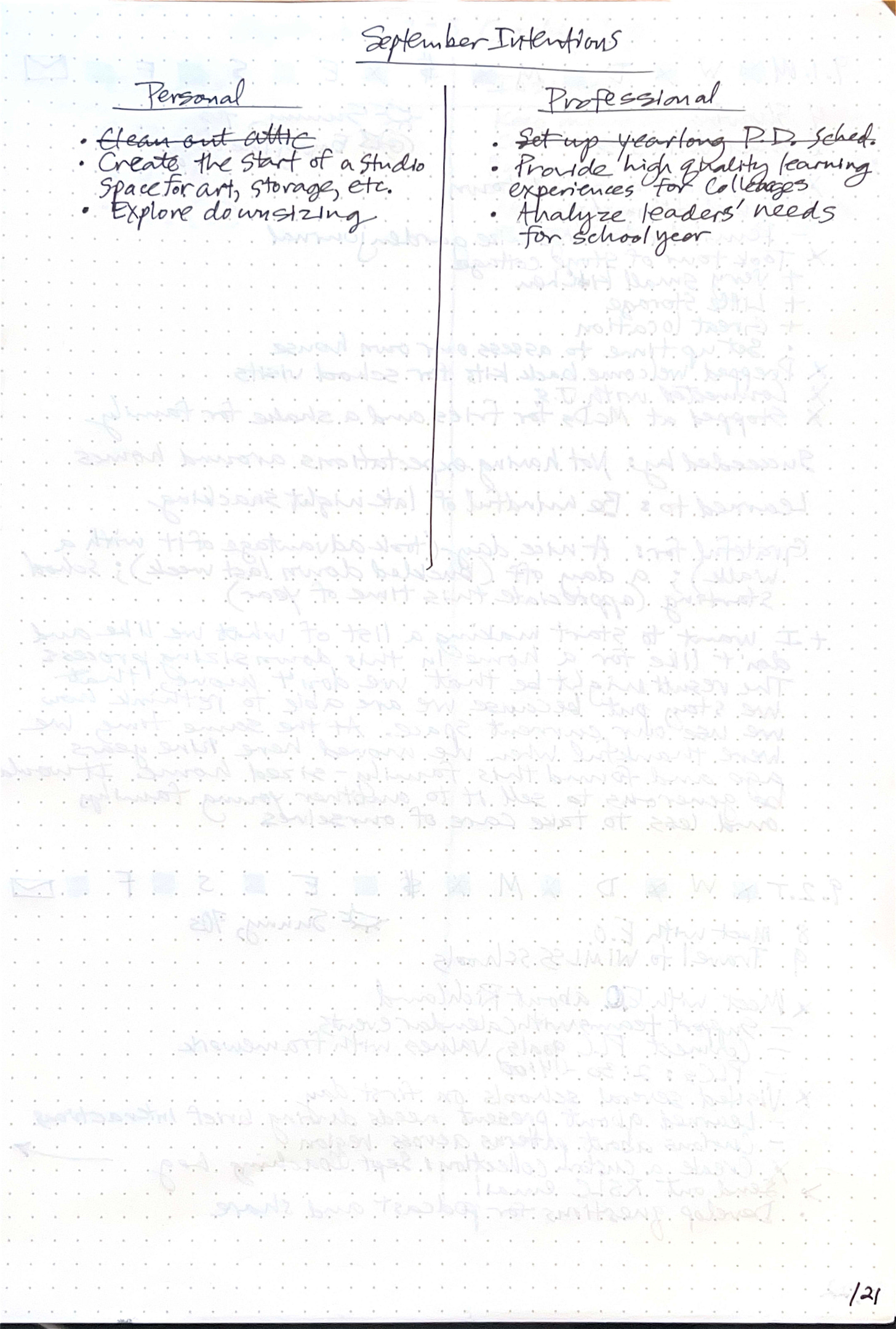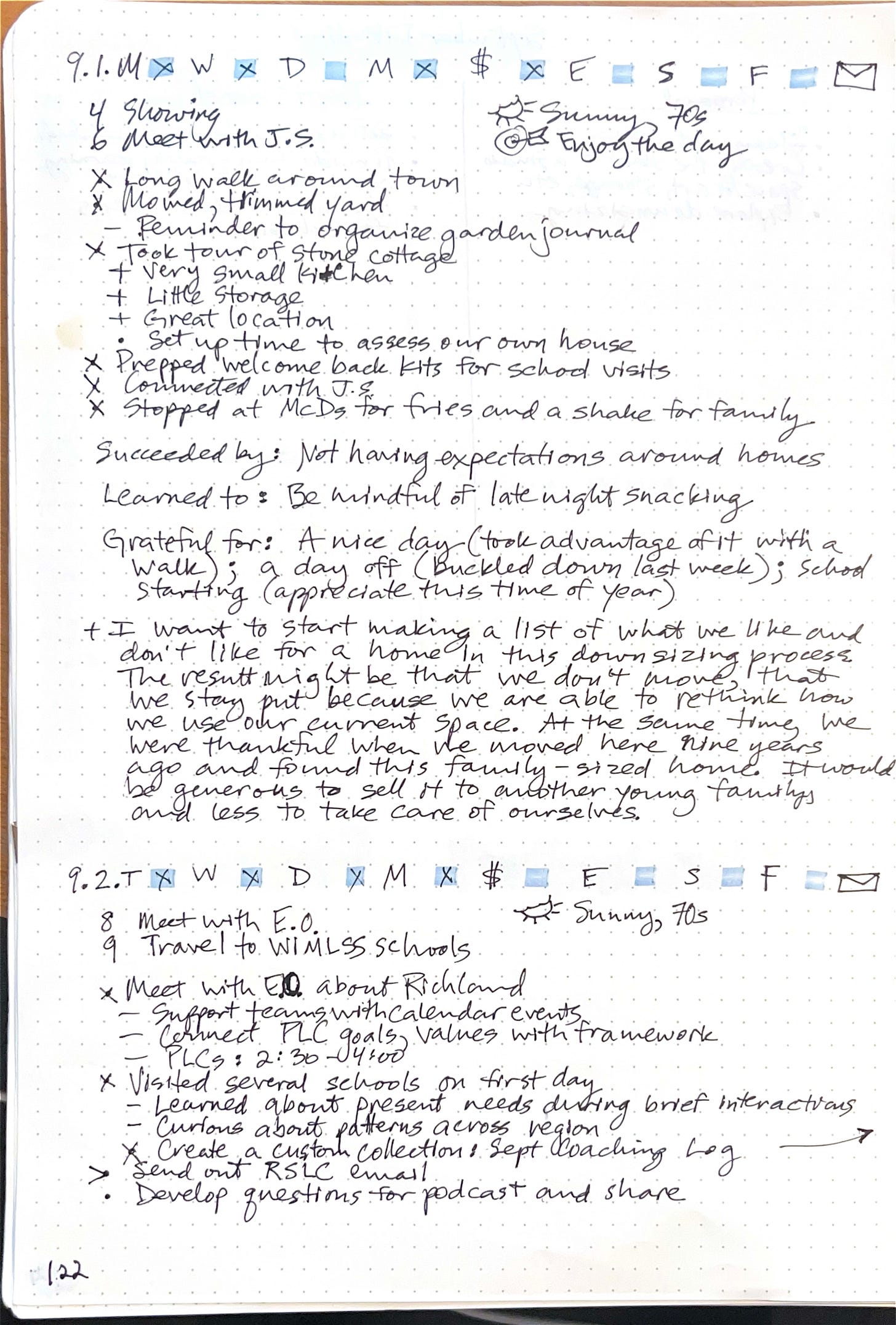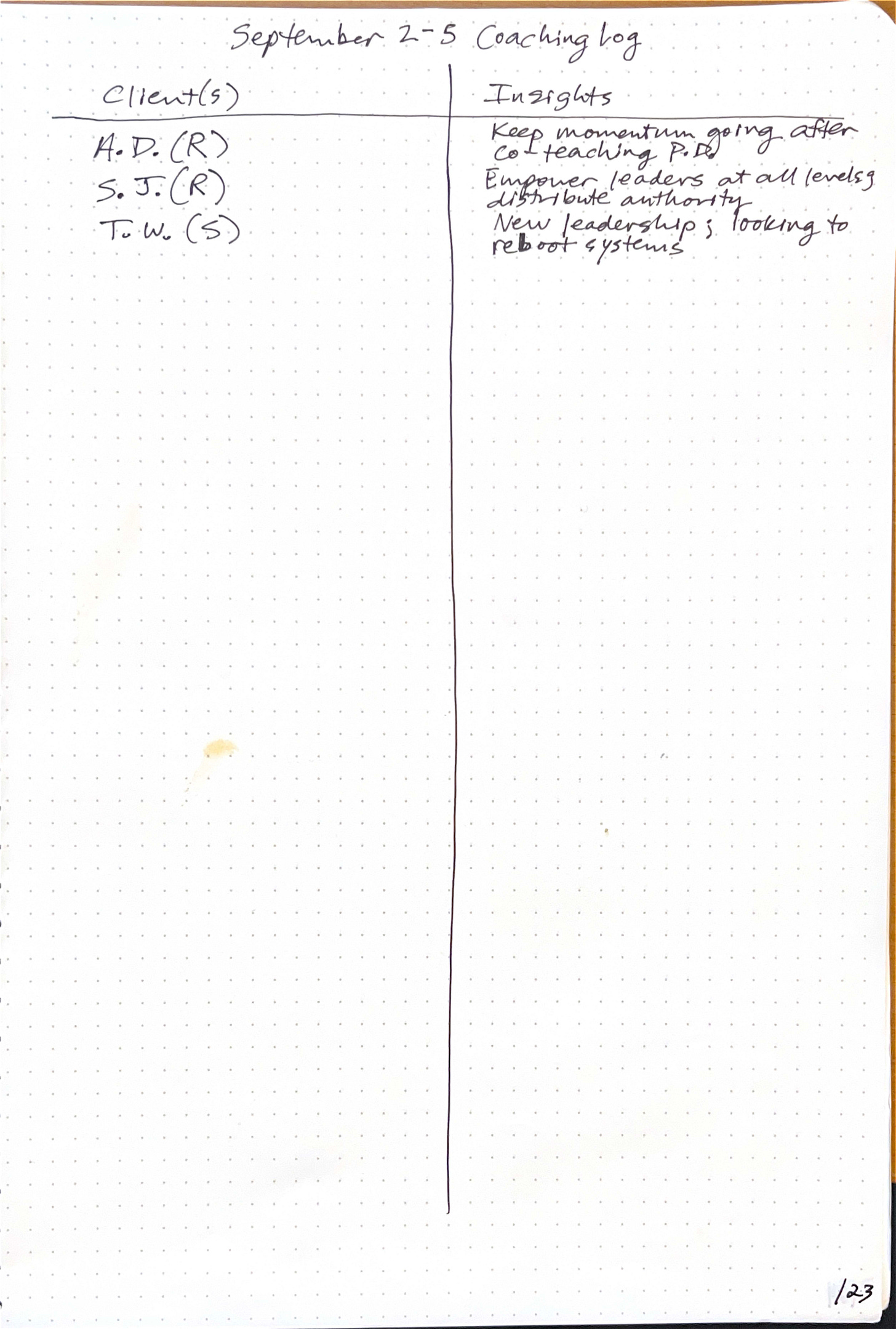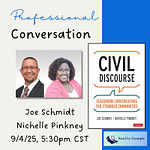In this video demonstration, I share key journaling tools - simple tracking tools and intentions for success - to start my month. The ultimate goal is improving outcomes for teachers and students. That includes a sense of well-being, not just achievement. When others feel supported and successful, so do I as a coach and a leader. A written explanation is also available below if you prefer to read vs. watch.
Page 1: Monthly Timeline
This idea comes from The Bullet Journal Method by Ryder Carroll.1 It is a calendar for the month in a list format. On the first page of the month in a dot journal, I document one thing I did each day that stood out to me. For example, yesterday (Monday, September 1st, or “1M”), I took a tour of a stone cottage with my family with a realtor.
It’s not a calendar; I don’t typically add planned events ahead of time unless they are important. That’s what my digital calendar is for. The function of the timeline comes after you add your activities. It’s a tool for reflection. During weekly and monthly reviews (which I will share more about next month), I examine how I am spending my time and make changes if I am not happy with my actions.
One way to facilitate this reflection is to separate the monthly timeline into two columns: personal and professional. This helps me quickly assess where I am giving more of my attention and time: to work or to personal commitments. If you are limited on space in your journal, you can use a highlighting system to differentiate between the two, such as green for personal.
Finally, I like to track my key habits on the side of the timeline. For me right now, that is writing (W), exercise (E), and budget ($). I put a dot under each column. Again, a simple and visual way to track the positive habits I am trying to build.
Page 2: Monthly Intentions
I use the word “intention” purposefully. In the past, I have titled this page “goals”. The problem with this language, at least for me, is that my goals aren’t always in my zone of control. For example, I would like to hit a certain weight. While that is a great goal, a lot of factors and influences go into making that happen: watching my diet, exercising, and eating healthy foods.
So, intentions are not the same as goals, and they are more than just projects. They cannot be accomplished with one or a couple of steps. They exist somewhere above both goals and projects. More importantly, they are an aspiration for what I want to accomplish this month. It’s easy to fall into the “goal/project” list. For instance, in my current set of intentions (also divided by personal and professional), I initially listed “clean out attic” and “set up yearlong P.D. schedule”. These are projects. I revised them with clearer intentions: “Create the start of a studio space for art, storage, etc.” and “Provide high-quality learning experiences for colleagues”. They are more motivating and open. Projects and goals can exist within them.
Note: I don’t have more than a handful of intentions listed at any one time. I have dozens of projects saved in a task management app (Todoist). What I want to accomplish this month, I migrate over to my intentions page for the month. I aim to have no more than ten (10) intentions, an idea that comes from Four Thousand Weeks by Oliver Burkeman. It’s a good constraint: just the right amount of options to choose from in the moment. We experience decision fatigue and procrastinate when we have too many options, for example, 20 different kinds of ketchup at the grocery store.
From there, my daily log should at least partially reflect these intentions. In the example below, from yesterday, I documented a tour my wife and I took of a stone cottage in our small city. We are exploring the idea of downsizing. This wasn’t part of our plan when I created my intentions list. Seeing that it is important to us, I will add it. Not as something to accomplish to prioritize. That means it will get more of my attention than other, lesser requests for my attention.
Likewise, today (9.2.T), I noted that I wanted to capture insights from my interactions with coaches and leaders during school visits. So I created a custom collection on the next page as a simple tool for this purpose. This became another intention on my monthly list.
When this coaching log is complete, I can review all the insights and determine what the common needs are with clients. I may use A.I. to help me with this analysis (I masked the names). While technology is helpful in this way, I find paper and pen to be most beneficial for seeing everything all at once. Digital tools have a way of hiding my commitments - out of sight, out of mind.
Next month (October), I will share more about daily logs, as well as how to start a brand new notebook! Let me know what questions come up for you from this post in the comments. Paid subscribers can also join me for an “Empower Hour” on Thursday, September 25 at 4:00pm CST to discuss these topics in real time. Register below.
All book links go to my affiliate account through Bookshop.org, which supports independent bookstores.

